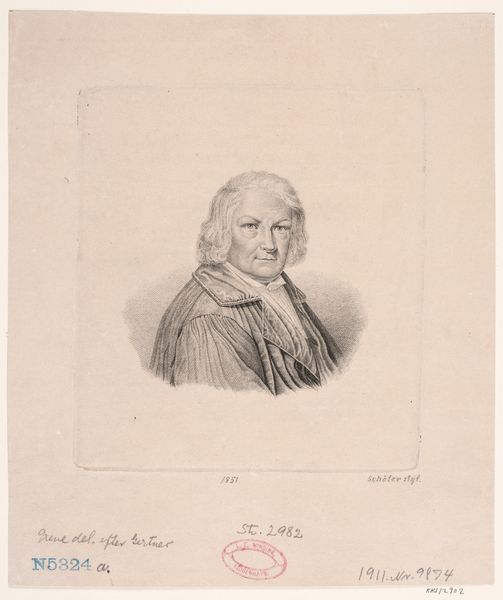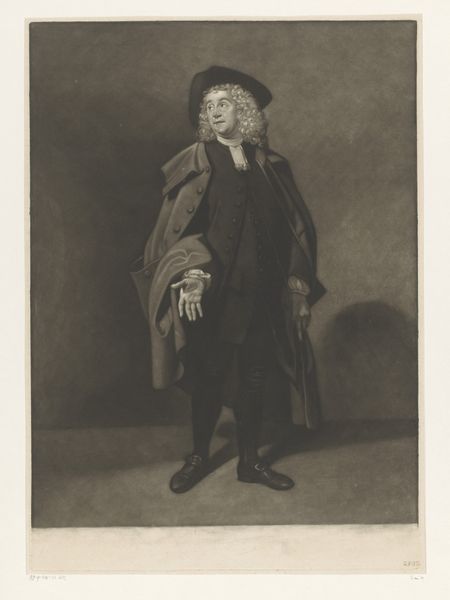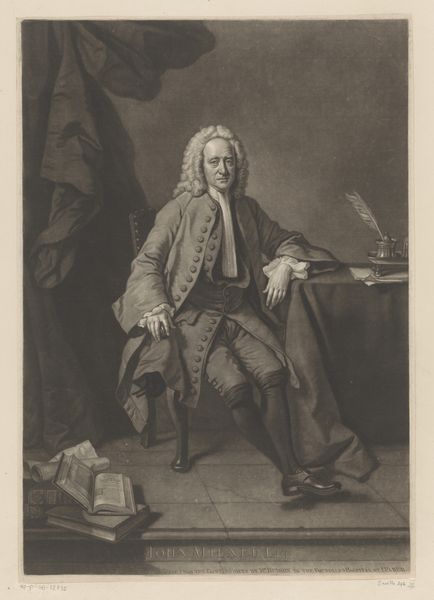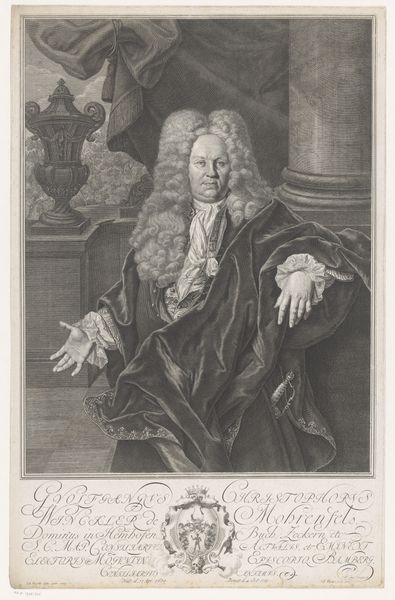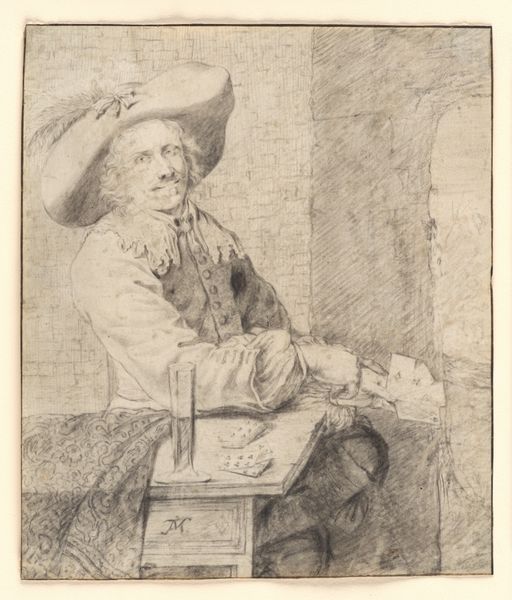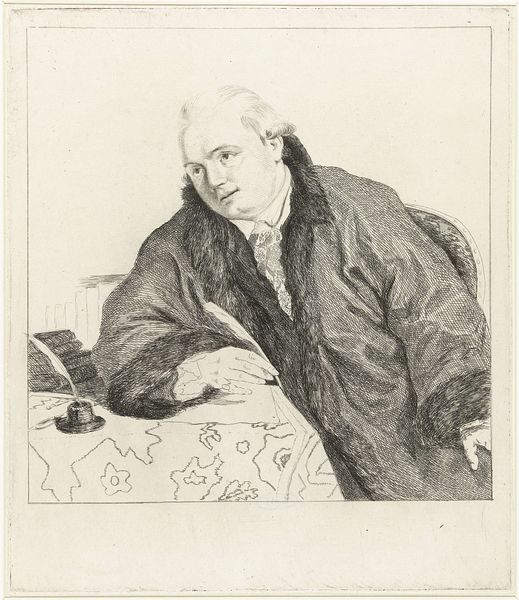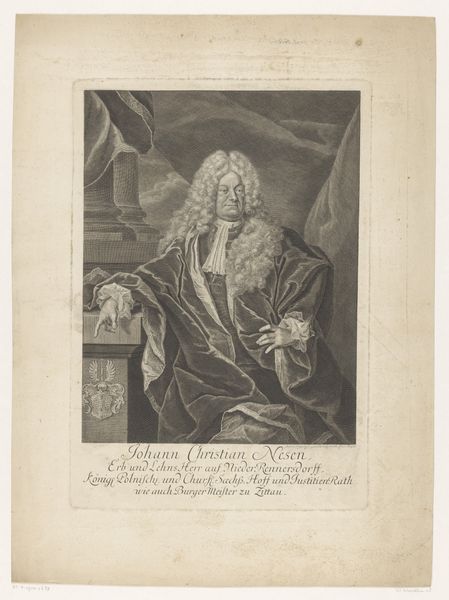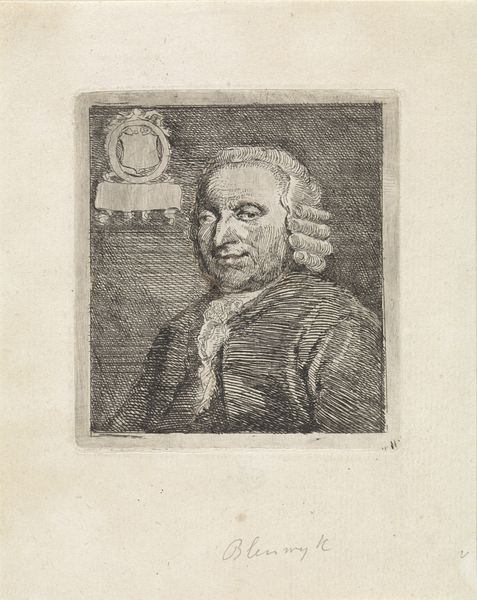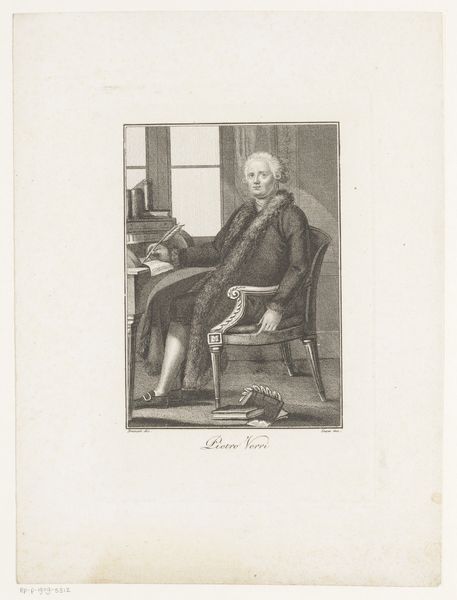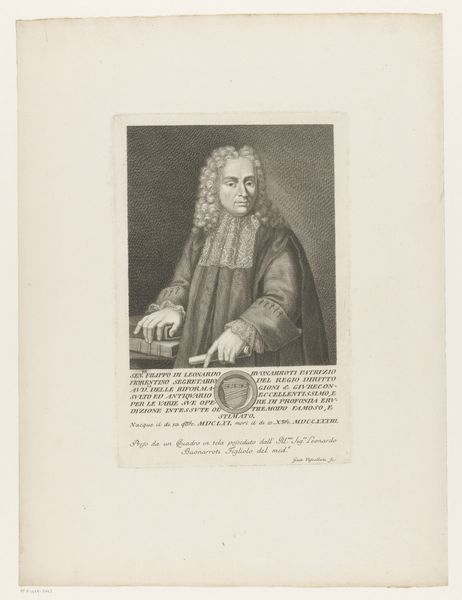
Porträt des Jacob van Hoorn und seiner Frau Jacoba Selstede (Original Title) 1735 - 1740
0:00
0:00
drawing, graphite
#
portrait
#
drawing
#
baroque
#
graphite
Copyright: Public Domain
Curator: Welcome. We are looking at a graphite drawing called "Porträt des Jacob van Hoorn und seiner Frau Jacoba Selstede," which roughly translates to "Portrait of Jacob van Hoorn and his Wife Jacoba Selstede". Jacob Folkema created this image sometime between 1735 and 1740. It now resides in the Städel Museum. Editor: What immediately strikes me is the textural contrast. The man’s clothing is heavily worked with graphite, creating a velvety darkness that firmly situates him in the foreground, while his wife hovers ethereally behind him. Curator: The ghostlike rendering of the wife Jacoba is compelling. In its symbolism, does she appear as a spiritual presence, almost like a muse or guiding force? Editor: I think that observation opens up the possibility of reading her relationship to him beyond just spousal. Looking at how Folkema applied value, or more precisely, how much he didn’t apply, she practically dissolves into the background, even appearing translucent! Perhaps there are underlying tensions at play regarding power dynamics between the couple? Curator: Indeed. The darkness associated with Jacob contrasts strongly with the lightness of Jacoba. Note how his pose conveys deliberation, almost to the point of stubbornness. Given his confident physical presence compared to hers, her semi-transparency in the artwork could mean several things. Does it suggest an unequal partnership within their society? It may also point towards traditional ideas around women's role and presence, both culturally and historically. Editor: That brings me to think more deeply about what is *not* overtly rendered: that the background space is almost totally emptied out, lending an aura of isolation. Folkema's deliberate choice underscores the relationship itself and demands close viewing of this coupling within the boundaries of this drawing. I would love to see a modern recreation of this, filtered through contemporary eyes! Curator: The ghostly presence of the wife might reflect conventional portraiture from the period as it represents conventional symbols of female role but her depiction provides intriguing insight into psychological spaces surrounding gender, representation and marriage at the time. Editor: What I take away most from this drawing is how such seemingly traditional rendering can unveil unspoken psychological and cultural dynamics in such an impactful fashion!
Comments
No comments
Be the first to comment and join the conversation on the ultimate creative platform.
